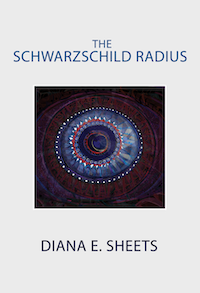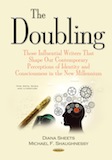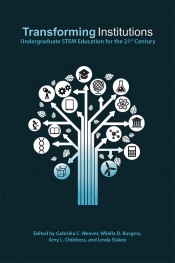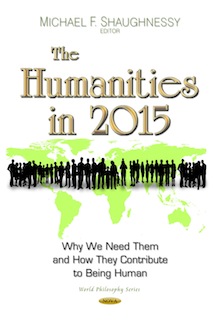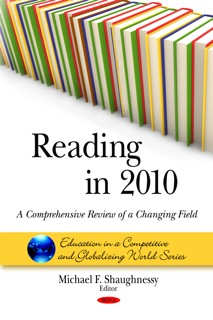Journalism in the Age of the Internet
Copyright © 2008 by Diana E. Sheets
“The Medium Is the Message”—is the fateful phrase coined by Marshall McLuhan in Understanding Media: The Extensions of Man (published in 1964 and reissued by The MIT Press in 1994, 7). What does it mean to be a journalist in the electronic age when news is transmitted twenty-four hours a day, seven days a week to what McLuhan called the “global village”? Or, as he suggested, in anticipation of the media savvy Internet audience, “surf-boarding along on the new electronic wave” through a virtual reality streaming audio, visual, and textual stimulus that is ever changeable and contingent? (The Guttenberg Galaxy: the Making of Typographic Man, University of Toronto Press, 1962, 31, 144).
Indeed, what will be the consequence of this transition from McLuhan’s “Typographic Man,” conceived in the age of moveable type, now reincarnated as his “Graphic Man” spritzing through the landscape of our virtual geocentric universe? As Sven Birkerts suggests, the transition from print to electronic became the segue from linear to nonlinear, from cognitive interpretive understanding to passive reception, from private to public engagement, from chronological to evanescent, from static to fluid, from layered sequential textual information requiring sustained attention to rapidly changeable increments of jump-cut content that includes textual, visual, and auditory information. Rather than books with centuries of accumulated knowledge, the web is a vast associative repository of undifferentiated data speeding along the information highway. In the migration from the printed word to electronic bits, language erodes, historical perspectives flatten, and the private self—as opposed to the manufactured public personas prominently showcased on the Internet—all but disappears (“Into the Electronic Millennium,” The Gutenberg Elegies, 1994, 122-3, 128-31).
Today, our legacy print medias struggle to survive. Paper newspapers—and, by extension, publishing—are embattled. The Christian Science Monitor, founded in 1908, announced on
Nor are these isolated occurrences. David Hunke, publisher of the Detroit Free Press—the twentieth largest daily newspaper—as well as the Detroit News, announced December 16, 2008 that both papers would reduce home deliveries to only three days a week. Each would offer a limited daily print edition in stores and on newsstands while focusing on developing an Internet presence (http://www.chicagotribune.com/business/chi-wed-detroit-newspapers-dec17,0,5408929,print.story). As Hunke noted, “There is a day of reckoning coming for newspapers. That is a way of life that is going to disappear (for some newspapers) as early as this coming year.” Adding, “We cannot live in the past. The dynamics of delivering information to audiences has changed forever due to technology” (“ETC.;
How has journalism been impacted by the death of the mechanical age and the concomitant rise of the electronic?
· The five Ws and H method of reporting (Who, What, Where, When, Why, and How) no longer applies. It shaped the narrative arc for storytelling certainly since Rudyard Kipling memorialized the maxim in a poem published in Just So Stories (1902, http://en.wikipedia.org/wiki/5_Ws). However, in the age of radio, television, and the Internet, a twenty-four-hour news cycle operating seven days a week has challenged the traditional medium. Simply put: newspapers can no longer keep current with the news. Stories are constantly breaking and that medium can’t supply the moment-by-moment content required by an audience hungering for instantaneous information.
· The top reporters for the “legacy” newspapers increasingly provide in-depth profiles—the hyped story behind the breaking story—rather than the actual coverage of the news event, which has already aired on radio, television, and the Internet. On-line sources suggest to reporters what issues have currency and will potentially drive readership.
· For this reason the news “beat” of reporters is now principally the Internet, rather than the territory of the street, which consisted of conducting face-to-face interviews or consulting the paper archives. Breaking stories on the web come from an array of sources: bloggers, other newspapers, weeklies, journals, and, increasingly, a range of electronically sourced documents.
· The stable of ideas for these profiles comes from trawling the Internet. Information framed as a breaking story is “borrowed” from Internet websites, news outlets, and archival sources. It is then repackaged as breaking news principally by modifying the story content to give it a fresh spin. Thus, a headline story is born and reborn and reborn—borrowed, modified, expanded, always with a new spin. This enables reporters to publish stories that frequently have their origin elsewhere without giving due credit to these unnamed sources.
· This journalistic mimesis—one story playing off another and another and another—produces an acceleration effect, thrusting the narrative dynamically forward. In the days of the Typographic Man, reporters cited their sources, usually interviews from eyewitnesses. Today these sources, derived from blogs, other newspapers, and archival data, are rarely acknowledged.
· The seemingly anonymous nature of the Internet with its abundant supply of information tempts journalists, who are under increasing pressure by their newspapers to publish frequently and garner prize-winning stories, to plagiarize and fabricate stories. The most notorious case in recent years has been that of Jayson Blair, who resigned from The New York Times after Mararena Hernandez, a reporter from the San Antonio Express-News, accused him of plagiarizing one of her stories. An investigation revealed that at least 36 of the 73 articles Blair wrote as a national reporter for The New York Times contained journalistic fabrications or plagiarized material. This internal review did not include a systematic examination of the 600-plus other articles he wrote for the paper, although spot checks of several articles suggested fraudulent reporting there as well. Blair’s falsifications were, as The New York Times noted, aided and abetted by his “cellphone and a laptop computer” and “round-the-clock access to [online] databases of news articles from which he stole.” (“Times Reporter Who Resigned Leaves Long Trail of Deception: CORRECTING THE RECORD,”
· In the domain of the Internet, “content scraping”—copying and pasting material from other websites without authorization—is generally considered fair use. Not only is this material commonly posted on other websites without authorization, frequently the author’s name is deleted and replaced with the name of the offending plagiarist (Del Jones, “Authorship gets lost on Web,” http://www.usatoday.com/tech/news/2006-07-31-net-plagiarism_x.htm?POE=TECISVA. Copyright violation has become so prevalent that information on how to combat the problem is increasingly available online (see Jonathan Bailey’s website, Plagiarism Today, http://www.plagiarismtoday.com/about-plagiarism-today). Steve Rubel, senior Vice President at the public relations firm Edelman, writes an influential blog, Micro Persuasion. “Today,” he suggests, “there is just more content to steal.” Adding, “People take content from my blog all the time” (Maura Welch, Globe Correspondent, The Boston Globe,
· Consider also how pervasive these unauthorized borrowings have become. The extent of the problem is best gauged by examining the piracy epidemic occurring in the film, music, and business and entertainment software industries since it is in these businesses that copyright infringement represents a substantial financial loss and that the war against piracy is chiefly being waged. A report published by the Institute for Policy Innovation in October, 2007 estimates the annual loses associated with piracy at $58 billion. This has cost Americans 373,375 jobs, $16.3 billion in earnings, and $2.6 billion in tax revenue (Stephen E. Siwek, “The True Cost of Copyright Industry Piracy to the U.S. Economy,” Institute for Policy Innovation, Policy Report No. 189, Executive Summary). What is the extent of this problem? In a 2005
As newspapers, books, and archives migrate from paper to the electronic medium, how do users read this content on the Web? Based on eyetracker analysis, “They don’t,” concluded Jakob Nielsen of Nielsen Norman Group. In his 1997 “alert,” “How Users Read on the Web,” Nielsen noted that barely 16% of those tested read pages sequentially, from beginning to end. Other users scanned the material, “picking out individual words and sentences” as they skipped over much of the content. Generally, readers flitted from page to page, focusing only on points of interest while ignoring the rest. Another “alert” concluded that users read quickly in an “F-Shaped Pattern”, reading across the top of the page, shortening their horizontal reach as they moved down the page until, at the bottom they scanned the text almost top to bottom, ignoring the lower right-hand segment (
Not surprisingly, an eyetracking project undertaken by the Poynter Institute in 2000 to assess online newspaper and news readership suggested that viewers of online news sources preferred viewing news briefs over complete articles by a three to one margin. Even those who read the entire article examined only 75% percent of the text. Often they read by means of “interlaced browsing,” bouncing among several opened windows, returning to the original, opening yet another, suggesting that readers favored interconnectivity and commonality between websites—rather than original content—to facilitate their information-gathering. Furthermore, Nielsen found that even preferred material—requested newsletters and RSS news feeds—were given scant attention. Readers allocated only 51 seconds typically to newsletters and only fully read 19% of them, typically bypassing the introduction to glance at the main body of the document before moving on. Lower-literacy readers utilizing the web struggled with multi-syllabic words, reading word for word while skipping any material they found too challenging. Teenagers generally proved less able then their elders, scanning faster, but with less patience and accuracy while showing a decided preference toward graphics and entertainment, rather than text-based material (Bauerlein, 144-7).
The implications of this migration of readers away from tangible print newspapers and books to screen-based Internet content suffused with auditory and graphical imagery, as well as other electronic media—television, movies, radio, cell phones, pod casts, and audio books—are explored in Caleb Crain’s essay “Twilight of the Books” published in The New Yorker (December 24 & 31, 2007, Vol. 83, Issue 41, 134-9). Americans, Crain noted, are reading fewer newspapers. According to the Editor & Publisher International Year Book circulation of newspapers plummeted from 62.1 million weekday newspapers in 1970 or 0.3 per person to 52.3 million or 0.17 per person in 2006. Indeed, according to
This decline in readership extended not only to newspapers but also to books and, especially, literary works—fiction, poetry, drama (“What the Publishers Won’t Admit About the Demise of the Great American Novel,” http://www.literarygulag.com/blog/show/14, and “Tom Wolfe Got It Right,” http://www.literarygulag.com/blog/show/4). As the National Endowment for the Arts (NEA) noted in its Executive Summary of “Reading at Risk” (2004), between 1992 and 2002 the percentage of adult Americans reading books declined by 7% while the percentage decline of adults engaged in reading literary fiction dropped by 14%. Furthermore, the rate of decline in literary reading actually accelerated between the ten year intervals 1982-92 and 1992-2002 (respectively, from -5% to -14%). This plummeting literary readership was particularly evident in young adult readers—ages 18-24 and ages 25-34—in which the percentage of readership declined, respectively, 17.0% and 14.4% from 1982 to 2002. This appeared to be associated with the increased use of electronic media (http://www.arts.gov/pub/RaRExec.pdf, 4-7).
To underscore the magnitude of the problem and its consequences, the NEA published a sequel, “To Read or Not To Read” (2007), that analyzed the economic and social ramifications of our loss of literacy, suggesting that our social and economic well being is closely associated with our reading skills. The findings are disturbing: almost half of all young adults (18-24) do not read for pleasure; from 1984 to 2004 the percentage of 17-years-olds who never or seldom read for pleasure doubled; the percentage of college graduates who were literary readers declined by 18% during this twenty-year period; and this trend appears to be associated with increased home Internet use, which in the period 1997-2003 soared to 53% among 18- to 24-year-olds (http://arts.endow.gov/research/ToRead_ExecSum.pdf 5-6, 8, 14-18).
If the decline in reading is measured with respect to purchasing power, the numbers are telling. In 1995 American households spent $163 buying books. By 2005 this figure fell to $126 (Crain,134). Indeed, the average family expenditure on books was “near its 20-year low,” as the report “To Read or Not to Read” noted (http://www.nea.gov/research/ToRead.PDF, 49). However, as Crain surmised, the average cost associated with purchasing these books increased (134).
The decline in readership has become so significant, according to Crain, that “Americans are losing not just the will to read but even the ability” (Crain, 134). He contends that we may, as Walter J. Ong postulated, be entering a “second orality” (Crain, 137). However, whereas Crain is pessimistic about the future or reading, Ong was receptive to the possibility of integrating text with a renewed orality, one that fosters “a communal sense, its concentration on the present moment . . . . ” This second orality, Ong argued, was “a more deliberate and self-conscious orality, based permanently on the use of writing and print . . . .” (Orality and Literacy, Methuen, 1982, 136).
Ong assumed—mistakenly—that printed books will always be published. He preferred to emphasize the quantity produced rather than acknowledge the decline in quality. His study familiarizes readers with the historic scholarship of orality, including studies by Milman Parry, Albert B. Lord, Eric A. Havelock, and A.R. Luria, to illuminate how our civilization transitioned from the oral to the written word (20-8, 34-5, 47, 49-56, 58-61, 80-2). But Orality and Literacy failed to acknowledge the risks inherent in a modern industrialized civilization regressing to orality, even an orality suffused with text, auditory, and visual imagery. Certainly, users who now regularly “surf” the Internet possess some reading proficiency (Bauerlein, 145-7). But later, as text-to-speech gains proficiency and as the ability to read becomes ever more compromised, who among us will be so sanguine?
As Neil Postman suggested, the shift away from the preponderance of the written word toward the visual represents the move away from “the unseen, the remote, the internal, the abstract” (Amusing Ourselves to Death: Public Discourse in the Age of Show Business, Penguin Books, 1986, 72). Or as Gavriel Salomon noted, “Pictures need to be recognized, words need to be understood” (Postman, 72, cited Solomon’s Interactions of Media, Cognition and Learning, Jossey-Bass, 1979, 36). Thus, according to Postman, images objectify the world, language conceptualizes it. For as he has shown, images have no innate [linguistic] syntax, no means of assessing the world. We, in other words, confer meaning to images, not vice versa (72). From this we may deduce that the loss of conceptual thinking—that ability to present a sophisticated written narrative derived from abstract concepts or mathematical evidence—would represent the impoverishment of mind and with it the foreshadowing of a loss of consciousness.
Web users overall confine their activities online almost exclusively to needs (work, purchase, and interaction), rather than intellectual ideas. Fortunately, for those few individuals committed to knowledge, the web has archives and domains that foster scholarship, although these sites are relatively few and at odds with the prevailing content.
If we accept McLuhan’s proposition that the medium is the message, what can we discern about the Internet and its impact on journalism? Applying McLuhan’s “tetrad” as a heuristic device, we posit his four questions to analyze how the new medium alters both the means of communication and the methods employed (Marshall and Eric McLuhan, Laws of Media, University of Toronto Press, 1988, 7).
· What does it [the Internet] enhance or intensify? Literary Gulag’s reply: multimedia interconnectedness.
· What does it [the Internet] render obsolete or displace? Literary Gulag’s reply: the ability to construct our narrative solely by means of the written word.
· What does it [the Internet] retrieve that was previously obsolesced? Literary Gulag’s reply: oral and graphic discourse.
· What does it [the Internet] produce or become when pressed to an extreme? Literary Gulag’s reply: a bombardment of our senses until we lose narrative, thereby ensuring our loss of consciousness.
Conclusion: The Internet provides the means and, potentially, the audience to present the greatest journalistic story of the 21st century: how might a civilization on the brink of collapse recreate itself in order to survive? Its audience, thankfully, is global and diverse, offering both content creators and content users the prospect of meaningful engagement between and within cultures. The concern is that the medium will propel us toward a global unconsciousness, thereby acting as a metastasizing agent. With print journalism nearly passé, let us hope that journalism survives its transition to the Internet. Imagine the horror of trying to navigate millions upon millions of websites absent a meaningful narrative. How might we assess all that content? Who or what will guide us through that maze of information, permitting us to discern what is important from what is not? In principal, journalism is the first draft of history. We expect accounts to be accurate representations of events, despite the vertigo we may experience living in the moment. At best, journalism provides us with an inspired narrative based on verifiable evidence that transforms our understanding of events or ideas. At worst, journalism degrades from news into gossip or propaganda or advertising, threatening to confer little more than the stench of our cultural detritus. However much we may want social justice or fairness, journalism stands at a remove from our political wishes and dreams. Its purpose is to decode those seemingly random events into a meaningful narrative. Let us hope that journalists present this story, no matter what their medium.


